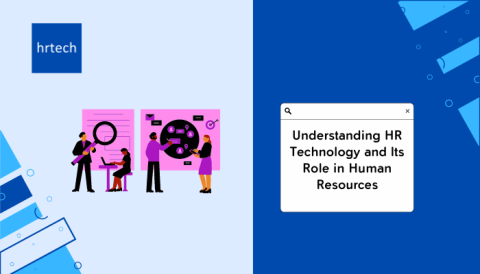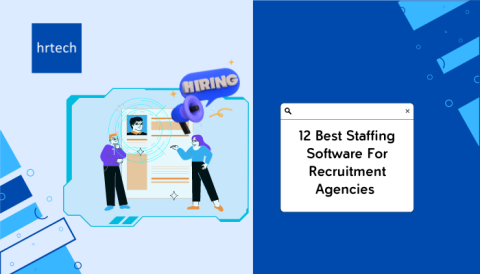Implementing an HR system is an important step for businesses looking to modernize their HR processes. It’s not just about adding new software; it’s about creating a solution that makes managing tasks like payroll, recruitment, and employee records easier and more efficient. A well-planned HR system implementation can save time, reduce errors, and improve overall productivity.
The HR system implementation process involves several key steps, from understanding your business needs and selecting the right system, to training employees and ensuring smooth integration. Each step is essential to make sure the system runs effectively and meets the organization’s goals. By carefully following these steps, businesses can set up an HR system that works seamlessly, supporting the growth and success of the company.
What is HR System Implementation, and Why is It Significant for Businesses?
HR system implementation refers to the process of integrating a Human Resources Management System (HRMS) or software into a business’s operations. This system streamlines various HR tasks, including employee onboarding, payroll management, performance tracking, and attendance monitoring.
Implementing an HR system ensures that these functions are automated, reducing manual work and minimizing errors. It plays a crucial role in helping businesses manage their workforce efficiently, allowing HR teams to focus on strategic tasks rather than mundane administrative duties.
Key reasons why HR system implementation is significant:
- Improved Efficiency: Automates repetitive tasks, saving time and reducing the workload for HR teams.
- Data Accuracy: Minimises errors by standardizing processes and ensuring accurate record-keeping.
- Enhanced Reporting: Provides valuable insights through detailed reports, aiding in better decision-making.
- Scalability: Easily adapts to the growing needs of a business, making it suitable for companies of all sizes.
- Compliance Management: Helps in maintaining compliance with legal and industry-specific regulations.
Implementing an HR system is not just about technology; it’s about transforming how a business manages its most valuable asset – its people.
How Do You Define Needs and Objectives for HR System Implementation?
When planning HR system implementation, it’s crucial to start by understanding the current HR environment and clearly outlining what you aim to achieve. Here’s how each step plays a vital role:

1. Evaluating Current HR Landscape
Begin by assessing your existing HR processes, tools, and workflows. Identify areas that are manual, time-consuming, or prone to errors. This evaluation helps in understanding what changes are needed to improve efficiency and effectiveness.
2. Identifying Key Objectives and Challenges
Define the primary goals for the HR system implementation. Are you looking to streamline payroll, improve employee engagement, or enhance compliance management? At this stage, it’s also important to pinpoint challenges such as outdated processes, data silos, or compliance issues that need to be addressed.
3. Exploring Potential Solutions and Streamlining Tasks
Research various HR solutions that can meet your objectives. Focus on features that can automate repetitive tasks, simplify workflows, and integrate with existing systems. Streamlining tasks reduces workload and ensures smoother, more efficient operations.
4. Focusing on Productivity and Transparency
The goal of HR system implementation should be to boost productivity by enabling faster and more accurate task completion. Additionally, it should promote transparency, offering clear reporting and easy access to data, allowing for better decision-making and improved organizational performance.
These steps ensure that the HR system implementation aligns with the business’s overall goals, leading to a more efficient and streamlined HR process.
Selecting the Right HR System
Choosing the right HR system is a crucial step that can determine the success of your HR operations. It involves careful evaluation of various factors, from system features to long-term scalability. Businesses need to make informed decisions that align with their specific needs and future growth plans. Here’s what to consider:
- Evaluating and Comparing Vendors and Features: Assess different vendors, compare their features, and ensure they meet your organization’s requirements.
- Considering Costs and Scalability: Look beyond the initial price; consider how the system can grow with your business and its cost-effectiveness in the long run.
- Ensuring Integration Compatibility with Existing Systems: The chosen solution should easily integrate with your current tools and software, avoiding disruptions.
- Involving Stakeholders in Decision-Making: Engage relevant teams and departments in the selection process to ensure the system addresses all essential needs.
Strategic Planning for Effective Change and Implementation
Effective HR system implementation requires careful planning and coordination. It’s not just about deploying new software; it’s about ensuring a smooth transition that aligns with the organization’s goals and resources.
| Key Aspect | Description | Why It Matters | Best Practices |
| Importance of Change Management and Resource Allocation | Guides employees through new processes and allocates budget, staff, and time to support each phase. Effective change management reduces resistance. | Prevents confusion and ensures smooth adaptation, reducing delays. | Appoint a change team, hold workshops, and allocate budget and staff for training and support. |
| Setting Realistic Timelines | Break down the process into phases with achievable deadlines, allowing for adjustments. | Prevents rushed implementation, minimizing errors and delays. | Create a project plan with milestones and adjust timelines based on feedback. |
| Developing a Communication and Engagement Strategy | Regular updates, training, and feedback channels keep employees informed and engaged. | Ensures employees understand benefits and adopt the system efficiently. | Send updates, host training, create FAQs, and provide feedback channels. |
| Collaborating with Different Departments | Involve IT, finance, and HR to ensure the system integrates and meets varied needs. | Collaboration prevents issues and creates a more robust solution. | Schedule regular meetings, discuss needs, and encourage open feedback |
How Do You Effectively Train and Prepare the Workforce for HR System Implementation?
Successful HR system implementation requires thorough training to ensure employees can adapt quickly and efficiently. Hands-on sessions, ongoing training, and tailored programs help staff gain confidence and retain key skills. A well-prepared workforce is essential for maximizing the benefits of the new system.

Detailed Explanation of Focus Areas in Workforce Training
1. Developing Hands-On Training Sessions and Workshops (40%)
Practical sessions help employees gain real experience with the system. Workshops allow for active participation, making sure staff feel confident and ready to use the new tools.
2. Focusing on Retention Through Ongoing Training (35%)
Regular, ongoing training ensures that employees stay updated and retain key skills. Follow-up sessions help address any issues and keep everyone comfortable with new features.
3. Customize Training to Different Team Needs (25%)
Customized training for each team ensures that everyone learns the features most relevant to their roles. This focused approach makes the HR system implementation smoother and more effective.
These areas ensure a smooth transition, empowering employees to make the best use of the new HR system.
How Can You Ensure a Seamless System Rollout and Proactive Monitoring?
A smooth HR system implementation requires careful planning and ongoing monitoring. This ensures the system is successfully integrated and functions effectively. Once the system is rolled out, it’s essential to keep track of its performance and address any issues promptly.
- Establishing a Monitoring System: Set up a process to regularly check the implementation’s progress, ensuring everything runs smoothly.
- Addressing Issues Proactively and Measuring Success: Identify and resolve problems quickly. Measure key performance indicators (KPIs) to gauge the success of the implementation.
- Setting Up Self-Service Options and Training Users: Enable self-service features for employees to handle simple tasks on their own. Provide training to ensure users can navigate the new system with ease.
This approach ensures that the HR system is not only launched successfully but also remains efficient and user-friendly.
How to Achieve Continuous Improvement and Effective Evaluation in HR System Implementation
Successful HR system implementation requires ongoing attention and adjustments. Here’s how businesses can ensure continuous improvement, as represented in the chart:

1. Regularly Reviewing and Evaluating the Implementation Process (40%)
As shown at the base of the chart, regular reviews are the foundation of continuous improvement. Consistent evaluation helps track the system’s performance and identify any issues early on, ensuring that the HR system continues to meet business needs effectively.
2. Identifying Areas for Improvement (35%)
The middle section of the chart highlights the importance of identifying areas for improvement. Feedback from users and regular assessments can pinpoint parts of the system that need adjustments, allowing for better efficiency and smoother processes.
3. Adapting to Ongoing Changes and Updates (25%)
At the top of the chart, adapting to changes shows how crucial flexibility is. The HR system must be able to adjust to new business requirements, technology updates, and regulatory changes. Continuous adaptation ensures the system remains relevant and beneficial over time.
This structure, from the foundation up, emphasizes that regular evaluation, followed by targeted improvements and adaptability, is key to maintaining a successful HR system implementation.
Conclusion
HR system implementation brings numerous benefits to businesses, including increased efficiency, improved data accuracy, and streamlined processes. By automating routine tasks, it frees up HR teams to focus on strategic initiatives that drive organizational growth. However, the success of this process relies heavily on thorough preparation and active collaboration across teams. Identifying clear objectives and challenges upfront ensures that the chosen solution truly meets the business’s needs.
hrtech refers to the technology and software solutions designed to manage various HR functions, from recruitment and payroll to employee engagement. It empowers businesses by simplifying complex processes, providing data-driven insights, and enhancing overall efficiency.




